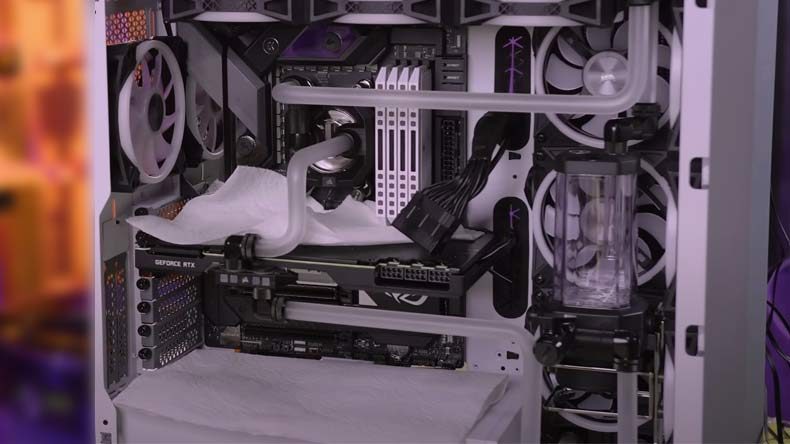How to fix high temperature with AIO water cooling
This guide will give you some guidelines on how to approach and fix high CPU temperatures when you have AIO water cooling system. It is very important to solve this problem as soon as possible because high temperatures can be dangerous for your PC.
Is the temperature in your AIO water cooling system really high?
You can use several indicators to identify if you have a high temperature or not.
In order to test properly use Prime95 and a temperature monitoring software like HWiNFO64 or Core Temp.
Although, Prime95 will hammer the system and generate a temperature you are not going to see in your everyday use, the cooling should still be able to cope with the excessive heat.
It is not always possible to say which CPU temperature is not normal, it is advisable to be within your CPU temperature limits.
Whether the temperature is normal depends largely on the AIO used, the CPU, its overclocking levels and the ambient temperature.
But regardless of the CPU and AIO cooling system used, you have couple of options to identify the problem:
Temperature problem with AIO water cooling
Problem 1
Your system’s temperature is high when idle, the PC switches off under Prime95 or the temperature immediately jumps towards 100 °C and the CPU throttles.
Cause
The CPU block may be tilted and as a result there is an insufficient contact surface between the CPU and the CPU block, or you forgot to remove the protective sticker from your CPU cooling block.
Solution
Mount the CPU block again. Look for sufficient contact pressure; remove the protective sticker from the CPU block
Problem 2
The temperature rises steadily when the computer is at idle. When using Prime95 the temperature rises slowly (5 minutes) towards 100°C until you experience thermal throttling:
Cause
The contact surface between CPU and CPU block is probably fine. This usually happens when the water is not circulating property through the loop.
Solution
Checked the CPU block and the radiator by touching them. If the CPU block is very hot and the radiator is significantly cooler, then the waste heat is not transported properly.
The most obvious reason is a defective pump or a clogged system.
If you have a flow meter check this first
Another method is to check if the pump is connected to the motherboard header, then you can use HWiNFO64 to read the pump’s RPM.
The third method is to use your hand or sound to determine if the pump is running. Touch the pump if you feel a slight vibration it is working.
If none of this yields any result, you can be assumed that the pump is actually defective and you need to RMA the cooler.
However, if the pump is running, there may simply be too much air or too little liquid in the circuit and you have to check for leaks.
Problem 2
Temperature rises very slowly, remains high but remains below the critical levels (<90 °C), the radiator and the CPU block are both hot to touch.
Cause
In the third scenario, the AIO cooler works properly, and the heat is transported through the loop on the radiator.
One of the main reasons for this scenario is the lack of air flow around the radiator.
However, if the fans work properly and they have sufficiently RPM the reason may be that your AIO system cannot cope with the heat generated by the CPU.
Solution
If the AIO is too weak for your setup, undervolt your CPU to reduce the generated heat
Check your radiator for dust and clean them.
Do not place your computer where there is not enough room for you fans to vent properly. Unvented heat will rise the temperature inside the loop and may damage the tubing.

